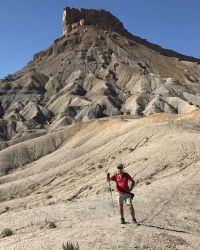Multiscale characterization of mudstones: implications for geoenergy systems and geodisposal
Presenter
Kevin Taylor, Ph.D.
Professor of Geoscience
The University of Manchester
Manchester, England, United Kingdom
Description
Mudstones and shales are commonly the primary control on the sealing efficiency for subsurface storage applications (e.g. energy, CO2, H2, waste). However, their fine-grained and heterogeneous nature makes their full characterization highly challenging. Here we demonstrate the multi-scale and dynamic imaging approaches that can help meet these challenges and discuss limitations and future opportunities.
2D and 3D microstructures can be characterized at scales from sub- nm (<1 nm) to over 1 m, using multi-scale and multi-model imaging approaches, including optical and electron microscopy, X-ray tomography, Focused Ion Beam Scanning Electron Microscopy and Transmission electron microscopy tomography. We have applied these techniques widely to understand better the variability in mineralogy and diagenesis in mudstones and the nature, shape, size, connectivity and textural relationships of minerals and pores (the latter which range from 0.2 nm to 3µm and exhibit varying network connectivity). We have also developed approaches to how these may be up-scaled through integrated analyses.
Dynamic (4D) imaging of mudstones/shales has provided us the opportunity to characterize the thermo-hydro-mechanical-chemical (THMC) properties and the coupling mechanism in mudstones/shales to investigate the sealing ability under realistic reservoir conditions. These include high temperature (from less than 10 °C up to 1000 °C), high pressure (e.g. confining pressure, indentation, torsion, deformation and fractures; up to 65 MPa), fluids (e.g. diffusion, adsorption, flowing through, multi-phase flow) and complex chemistry environment (brine and drilling fluids).
Whilst the above has led to an improved understanding of shale/mudstone microstructure under static and dynamic conditions, significant challenges still remain regarding representivity and up-scaling, and experimental analysis at subsurface-realistic temperatures, pressure and chemistry.
